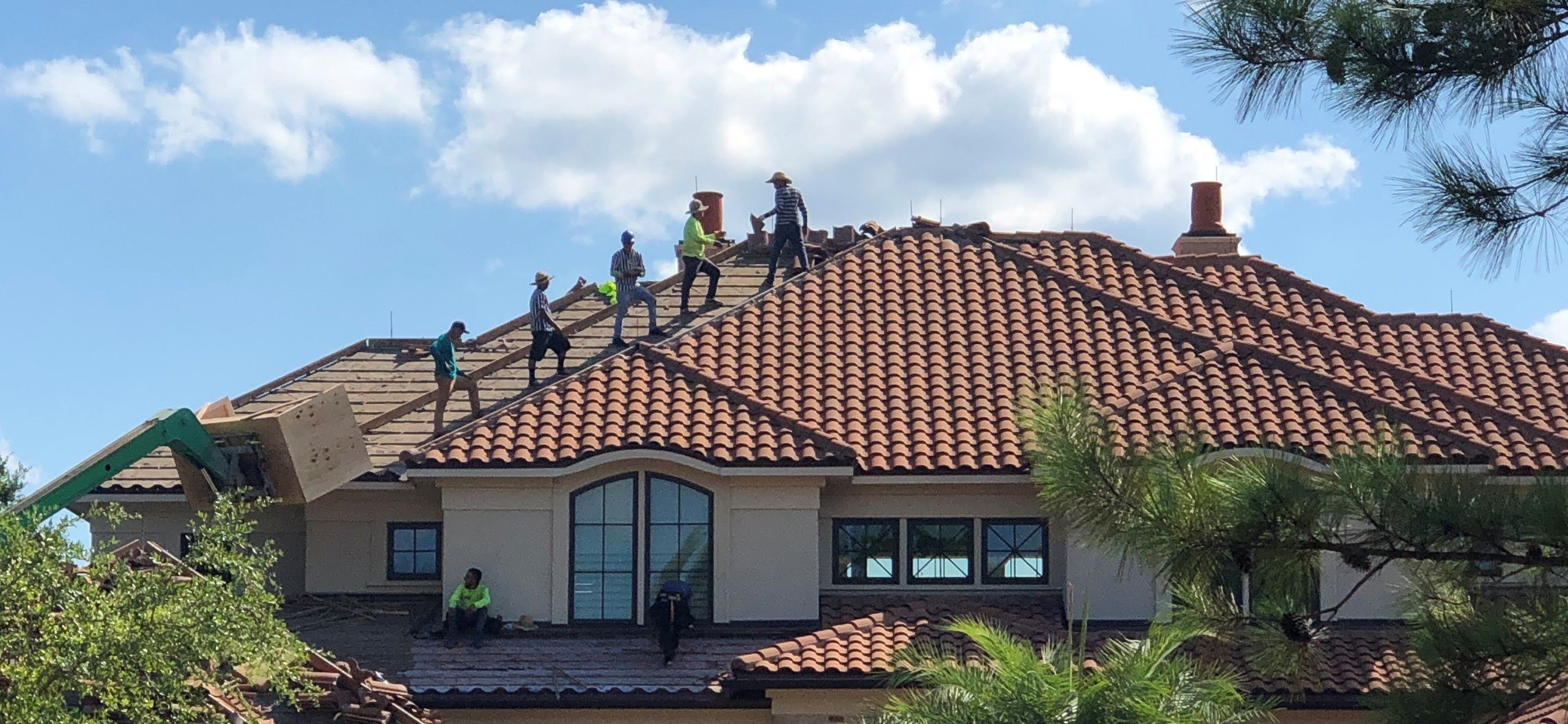A Comprehensive Look at Roofing Companies Gainesville Citizens Recommend
A Comprehensive Look at Roofing Companies Gainesville Citizens Recommend
Blog Article
Ideal Practices for Ensuring Proper Roofing Air Flow
Making certain correct roof ventilation is important for the longevity and efficiency of a roof system. A well balanced consumption and exhaust air vent proportion, commonly 1:300, plays a crucial role, with consumption vents preferably put at the lower edge of the roofing system for great air entrance and exhaust vents at the height for cozy air leave. Routine inspections to recognize clogs and preserve clear air flow are vital. Additionally, keeping insulation away from vents is important to stop air movement limitation. Comprehending these fundamental components sets the stage for even more detailed insights into installation and maintenance practices that can significantly enhance your roof covering system's performance.
Understand Ventilation Essentials
Correctly recognizing air flow basics is vital for ensuring the durability and effectiveness of roof. Effective ventilation mitigates dampness accumulation and temperature extremes in the attic, both of which can result in considerable architectural damages over time. A well-ventilated roofing helps in stopping common issues such as mold and mildew development, timber rot, and ice dams, which can endanger the honesty of the roofing products and the underlying structures.
The key goal of ventilation is to promote the movement of air, enabling a regular exchange in between the outdoor and interior environments. This balance is accomplished via a mix of consumption and exhaust vents that collaborate to keep ideal air movement. Intake vents, normally situated along the soffits or eaves, permit fresh air to go into the attic area, while exhaust vents, frequently positioned at or near the roofing ridge, enable warm, damp air to escape.
Secret aspects influencing the effectiveness of roofing air flow consist of correct placement, appropriate sizing, and making certain that both consumption and exhaust vents are unhampered. Routine examination and maintenance are vital to identify prospective blockages, damage, or inefficiencies in the ventilation system, consequently securing the roof covering's efficiency and toughness.
Types of Roofing Vents
Roofing vents play a vital role in preserving efficient attic room air flow and, by extension, the overall health of the roof system. Numerous kinds of roofing vents are offered, each with one-of-a-kind advantages customized to details roof covering requirements.

Soffit vents are installed under the eaves and job in tandem with roof covering vents to ensure a well balanced intake and exhaust system. By enabling cooler air to get in from below, soffit vents assist in the expulsion of warm air with upper vents. Gable vents, situated on the exterior walls of the attic room, offer an additional reliable solution, specifically in homes with saddleback roofs.
Examine Your Current Ventilation

Following, consider the age and problem of your roofing products and air flow elements. Older systems may not adhere to existing structure codes or might have weakened over time, minimizing their efficiency. Conduct a complete exam to determine any indications of damage, such as rust, damages, or voids that could compromise the system's performance.
Furthermore, determine the attic room temperature and moisture levels. High temperatures and humidity can show inadequate ventilation.
Installment Best Practices
Efficient installation of roof ventilation systems is vital for guaranteeing optimum efficiency and long life. Appropriate installment begins with understanding the details air flow requirements of the roofing system and the building it covers. This entails determining the correct ratio of intake to wear down vents, commonly adhering to the 1:300 policy, which states one square foot of ventilation for each 300 square feet of attic flooring area.

The placement of vents is just as essential. Intake vents need to be mounted at the roofing's lower edge, frequently in the soffits, to enable awesome air to go into. Exhaust vents, on the various other hand, ought to be mounted near or at the roof's optimal to promote the exit of cozy, damp air. This develops a natural airflow that aids maintain temperature level and wetness balance within the attic room area.
Seal all vent links meticulously to avoid air leaks and potential water seepage. Usage premium products and comply with supplier guidelines to make certain toughness and performance. Furthermore, incorporating ridge vents with baffles can dramatically enhance air flow effectiveness by stopping wind-driven rainfall and snow from getting in the attic.
Inevitably, exact installment of roof covering ventilation systems minimizes possible problems such as mold growth, ice dams, and structural damages, guaranteeing the roof's stability and the building's total health and wellness.
Normal Upkeep Tips
Consistency in upkeep methods is basic to ensuring the long-lasting efficiency of roof air flow systems. Throughout these evaluations, ensure that vents are complimentary of debris, nests, and other blockages visit their website that might hinder air flow.
Cleansing the vents is an additional essential job. Use a soft brush or a vacuum to get rid of dust and debris from consumption and exhaust vents. Beware not to damage the air vent screens or louvers throughout the procedure. Furthermore, inspect the attic room area for any type of indicators of water damage, which could endanger the integrity of the roof.
Appropriate insulation is just as important. Make sure that attic room insulation does not obstruct the vents, as this can seriously limit air flow. If any type of insulation has actually changed or settled, rearrange or change it to preserve a reliable obstacle.
Lastly, change any kind of damaged or missing components quickly. Broken vents, cracked roof shingles, or deteriorated flashing can all add to poor ventilation and should be resolved right away. Routine maintenance makes certain that the roof covering ventilation system works ideally, thereby prolonging the lifespan of the roof covering itself.
Verdict
Making sure correct roof ventilation is paramount for maintaining the performance and longevity of a roof system. Adherence to the 1:300 intake and exhaust air vent proportion, coupled with the strategic placement of vents, is important.
A balanced intake and exhaust vent proportion, frequently 1:300, plays a critical role, with consumption vents preferably placed at the lower side of the roof for great air entry and exhaust vents at the height for cozy air departure. Consumption vents, typically located along the eaves or soffits, have a peek at these guys permit fresh air to enter the attic room space, while exhaust vents, commonly located at or near the roofing ridge, allow hot, moist air to leave.
Soffit vents are installed under the eaves and work in tandem with roofing system vents to ensure a balanced consumption and exhaust system. By allowing cooler air to get in from below, soffit vents assist in the expulsion of warm air through top vents. Adherence to the 1:300 intake and exhaust air vent ratio, coupled with the strategic positioning of vents, is crucial.
Report this page